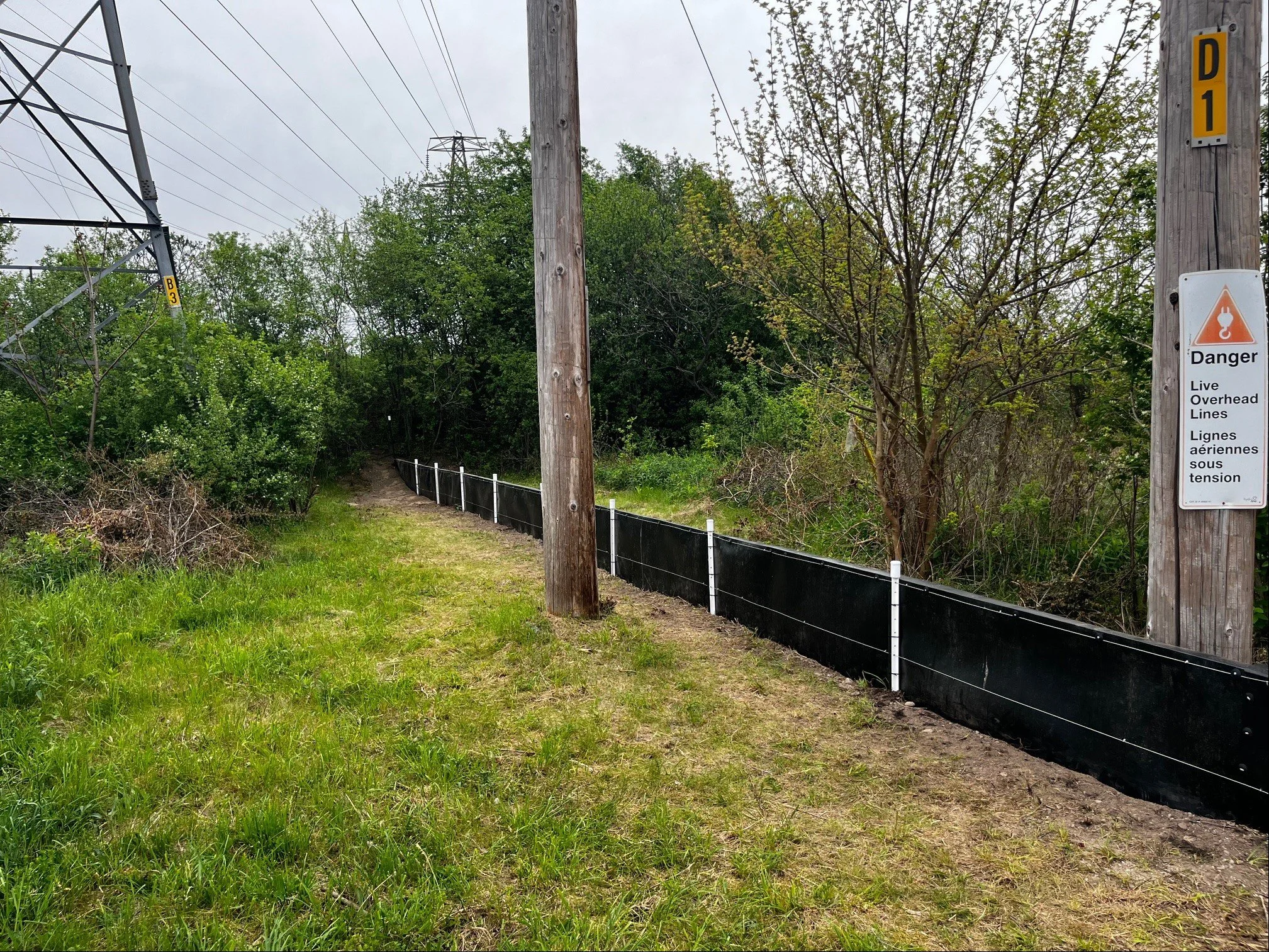
Lizard Fencing
Animex wildlife fencing is designed and tested to control lizard movement and exclude them from unwanted or dangerous areas. It optimizes natural lizard behavior to encourage safe and fast movement away from the fence line and, unlike mesh fencing, inhibits climbing and entanglement.
Controlling lizard movement
Poorly fenced construction sites pose risks to lizards, which may become trapped in trenches, pipework, or machinery. In the United States, 18% of lizard species are considered at high risk of road-kill. Lizards are especially vulnerable because they move slowly, are hard for drivers to see, and are drawn to the heat-retaining surfaces of roads and development sites.
Planning engineers must work to reduce these impacts. Well-designed exclusion fencing, used with measures such as tunnels, can lower mortality on roads and construction sites without disrupting natural life cycles. Fencing also supports population assessments before new development begins.
IMAGES: Temporary AMX-T fencing was used to contain reptiles, including viviparous lizards, during a translocation in the UK.
Top 5 lizard species Animex is commonly used for:
Dunes sagebrush
lizard
Texas horned
lizard
Bluetail mole
skink
Desert spiny
lizard
Blunt-nosed
leopard lizard
Blunt-nosed leopard lizard Gambelia silus
Coachella Valley fringe-toed lizard Uma inornata
Bluetail mole skink Eumeces egregius lividus
Sand skink Neoseps reynoldsi / Plestiodon reynoldsi
Reticulate collared lizard Crotaphytus reticulatus
Texas horned lizard Phrynosoma cornutum
Dunes sagebrush lizard Sceloporus arenicolus
and more…
Height
40in is the product height most commonly used with lizards
Standard above-ground installed height 22in / 550mm (with anti-climb and anti-dig lips)
We have various fencing products suitable for lizards
Temporary
Recommended for short-term projects between 1-5 years but has an anticipated lifespan of 25 years.
Guide Price: USD $4 per ft / CAD $18.50 per m
Semi-permanent
Recommended for long-term projects of approximately 15 years but has an anticipated lifespan of 50 years.
Guide Price: USD $7.50 per ft / CAD $37 per m
Permanent
Recommended for long-term projects of approximately 25 years but has an anticipated lifespan of 50 years.
Guide Price: USD $30.50 per ft / CAD $153.50 per m
Guide prices are based on Animex fencing material and standard fixings and fasteners. This does not include support posts or installation. AMX-48 or a smaller customized, unlisted product may be more appropriate for some projects. Please contact us if you have any concerns or questions about the height or type of fence that is best for your project.












